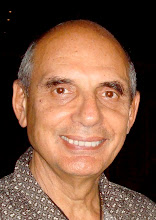Day 11
Feileisi – MarkanWe started the day with a photo op organized by Phoenix TV that are still trailing, or preceeding, us. There are still 5 miss in the competition, from the 10 that started in Beijing, and they appear every night on TV, and us too I assume. Then we were told we had to visit a Tibetain school (we are still in Yunan), which was a condition to have the right to cross that town. We drove 20km in the mountain but the last leg was too steep to climb for reaching the school, so we did few pictures with some Tibetain scholboys in full colorful native costume and we took the road again.
One of the driver got mountain sick and had to go, he may rejoin us in Katmandou. His wife not driving, his 2CV was put on the second and last trailer. (The first one being occupied by a 2CV which frame broke beyond repair in Siberia on it way to Beijing from Paris).
The road this time was better than expected, it had been recently repaired.
We entered Tibet.

We enter Tibet
The police check was quick, they only compared our French plate licenses to the list they had already received, it took few seconds and we were officialy in Tibet. (I have to note that at all the police stop we encountered, the Chinese officers were extremely polite and expeditiv.
The road was again spectacular. Green valleys encased in high mountains sparkled with Tibetain farms consisting in one storey for people and cattle and another one to dry the hay.. The houses are white with all the wooden frames painted in vivid colors. They are all based on the same design.
We went over a 4,324 meter pass, for practice, and reached Markan at 6.30pm, the first time we reached our hotel by day time. So we could see the town consisting in one main street and few alleys, very frontier like.
Very nice diner at a local restaurant (we had only nice diner since our arrival, but very few lunches, not enough time). On our search for an internet place we went through the market where they were slicing up a bull. We found the place and I could eventualy send some pictures to Laureline for uploading the blog
 Lake Palace where James Bond movie "Octopussy" was shot
Lake Palace where James Bond movie "Octopussy" was shot Washing time on the lake
Washing time on the lake













 16th Century precursor of the Taj Mahal, it had not reached the perfection yet.
16th Century precursor of the Taj Mahal, it had not reached the perfection yet. Stone cutters working along the same traditional way to repair some of the monuments
Stone cutters working along the same traditional way to repair some of the monuments
 The Taj Mahal early in the morning
The Taj Mahal early in the morning The Fatepur Sicrit Mosque
The Fatepur Sicrit Mosque
 A faithful one
A faithful one Road scene: a corpse is being taken to its last burial place.
Road scene: a corpse is being taken to its last burial place.  The Taj Mahal in the sunset, viewed from a local hotel terrace.
The Taj Mahal in the sunset, viewed from a local hotel terrace.

 The Godess Durga and her lion
The Godess Durga and her lion Sample of sculptures (decent one) covering the Temples
Sample of sculptures (decent one) covering the Temples


 Waiting at the Nepa;ese-Indian border
Waiting at the Nepa;ese-Indian border JP & Jerome going down the valley
JP & Jerome going down the valley The eyes of the Buddha see you wherever you are
The eyes of the Buddha see you wherever you are Monuments in Patan
Monuments in Patan The Mount Everest from the road 318
The Mount Everest from the road 318  Passing at 5,137 m
Passing at 5,137 m The pass at 5,137 meter with prayer-flags"
The pass at 5,137 meter with prayer-flags" Women beating wheat
Women beating wheat
 Large prayer mill
Large prayer mill Small prayer mill
Small prayer mill The Potala
The Potala The Potala at night
The Potala at night The highest pass
The highest pass
 Pilgrims going to Lhassa, only 800 km left to go
Pilgrims going to Lhassa, only 800 km left to go Getting yaks to better pastures
Getting yaks to better pastures Reaching a pass, prayer-flags
Reaching a pass, prayer-flags

